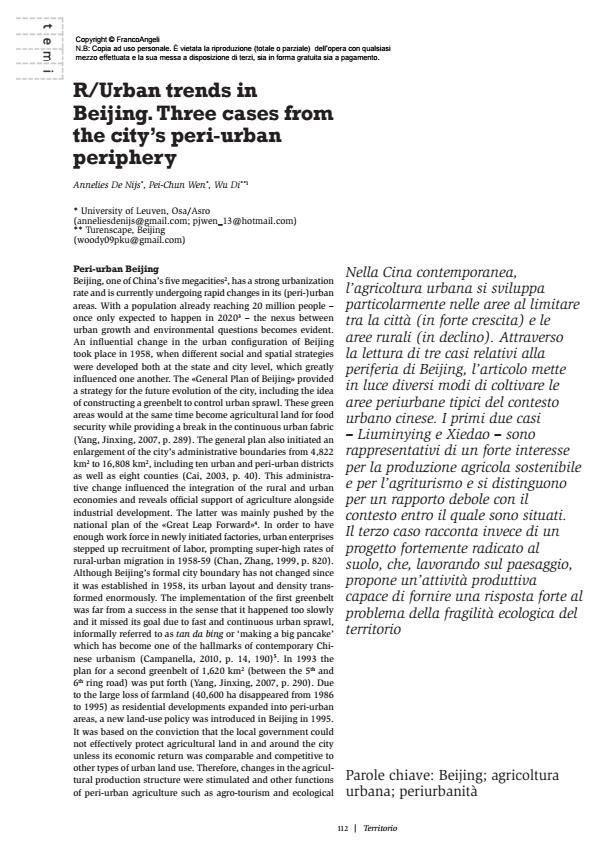R/Urban trends in Beijing. Three cases from the city’s peri-urban periphery
Titolo Rivista TERRITORIO
Autori/Curatori Annelies De Nijs, Pei-Chun Wen, Wu Di
Anno di pubblicazione 2012 Fascicolo 2012/60 Lingua Inglese
Numero pagine 5 P. 112-116 Dimensione file 385 KB
DOI 10.3280/TR2012-060020
Il DOI è il codice a barre della proprietà intellettuale: per saperne di più
clicca qui
Qui sotto puoi vedere in anteprima la prima pagina di questo articolo.
Se questo articolo ti interessa, lo puoi acquistare (e scaricare in formato pdf) seguendo le facili indicazioni per acquistare il download credit. Acquista Download Credits per scaricare questo Articolo in formato PDF

FrancoAngeli è membro della Publishers International Linking Association, Inc (PILA)associazione indipendente e non profit per facilitare (attraverso i servizi tecnologici implementati da CrossRef.org) l’accesso degli studiosi ai contenuti digitali nelle pubblicazioni professionali e scientifiche
In contemporary China, the evolution of productive land is related to specifi c government policies and the changing spatial conditions of the nation. Urban agriculture is particularly developed in the friction area between the (ever growing) urban and (threatened) rural territories. Different ways of cultivating the peri-urban areas are described in the paper, through the exploration of three cases of urban agriculture in Beijing. Whereas the fi rst two - Liuminying and Xiedao - show a major concern for sustainable production and agro-tourism, with a less embedded relationship with their respective contexts, the Taihu project is more rooted to its locale and provides a strong answer to the ecological sensitivity of the site. It can be argued that the Taihu case study exemplifi es an alternative to China’s ever-booming amount of and seemingly randomly placed agro-tourism sites.
Keywords:Beijing; urban agriculture; peri-urban
Annelies De Nijs, Pei-Chun Wen, Wu Di, R/Urban trends in Beijing. Three cases from the city’s peri-urban periphery in "TERRITORIO" 60/2012, pp 112-116, DOI: 10.3280/TR2012-060020